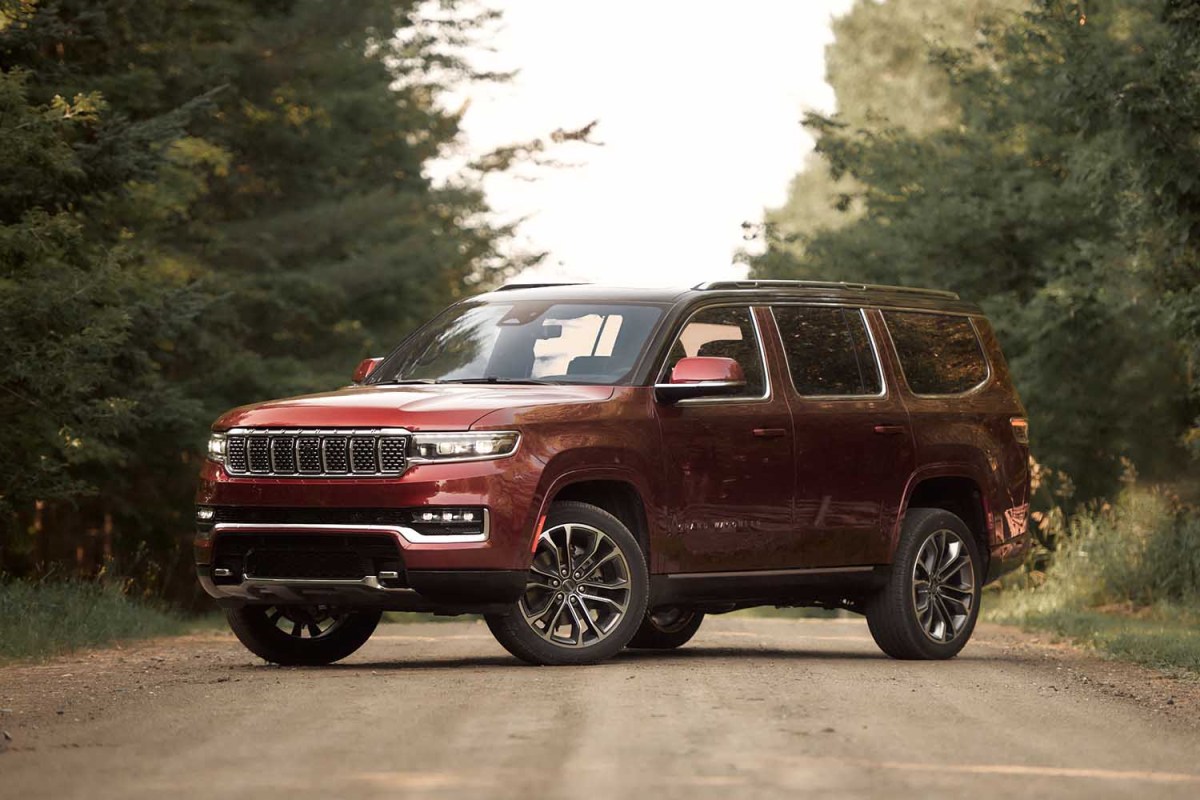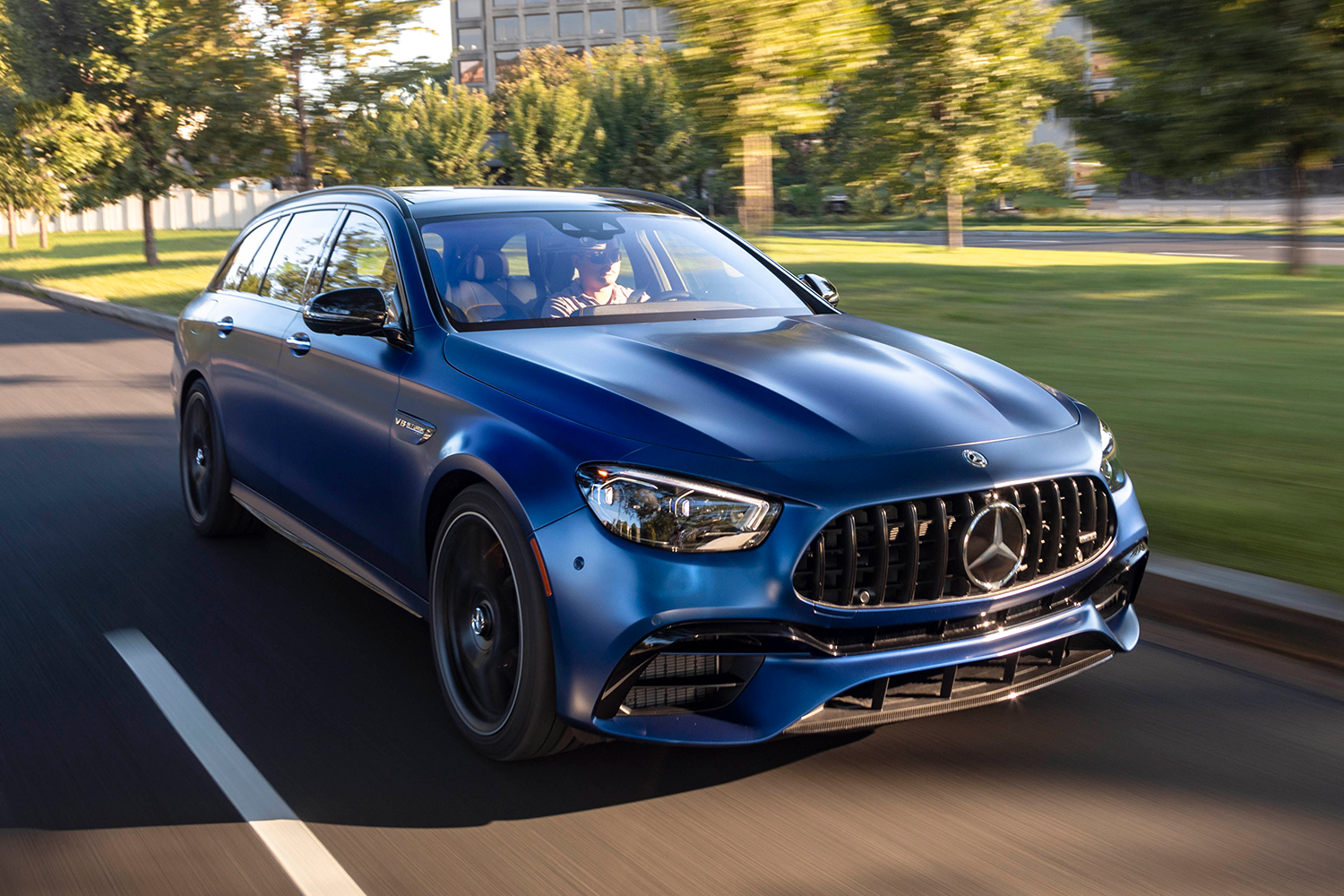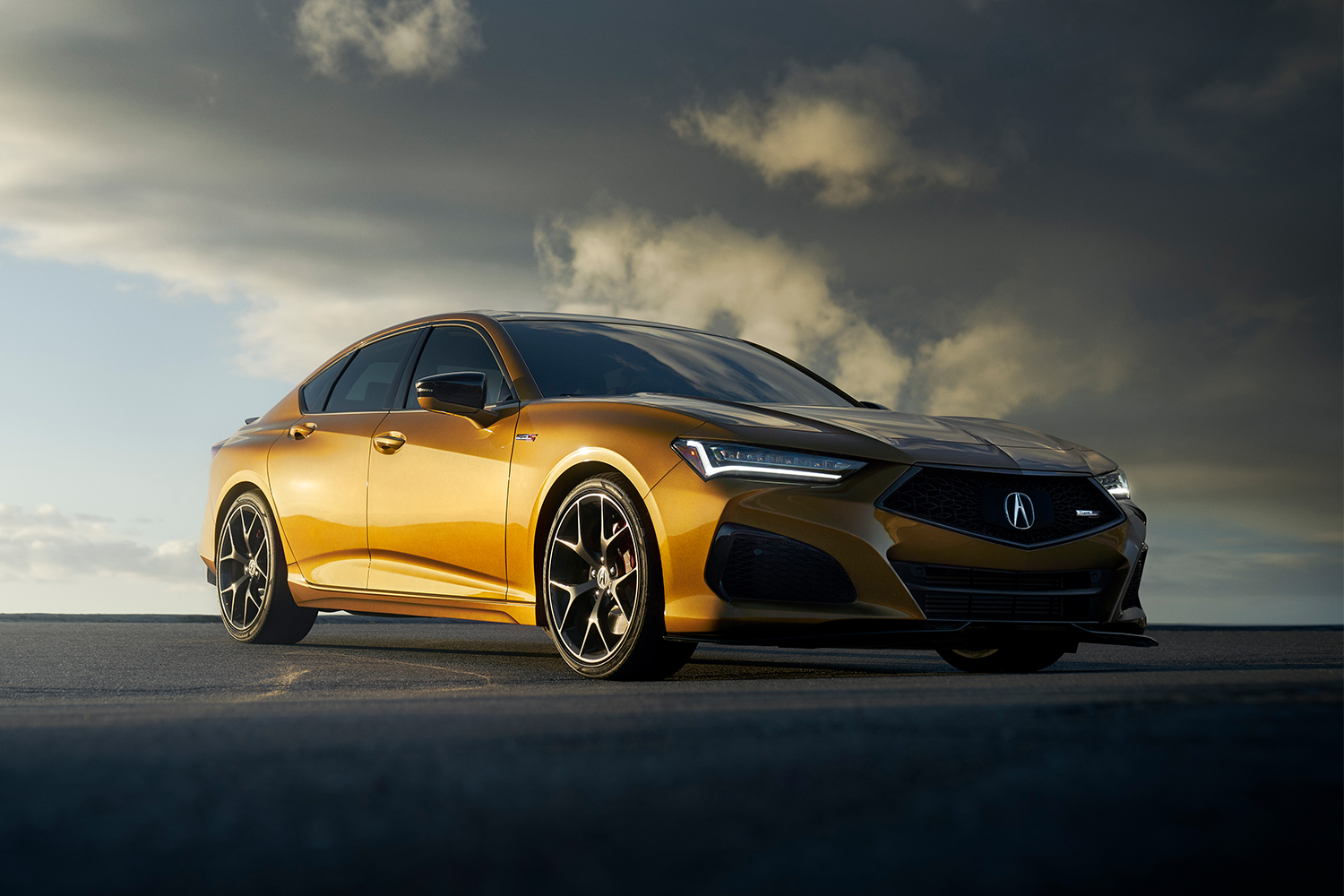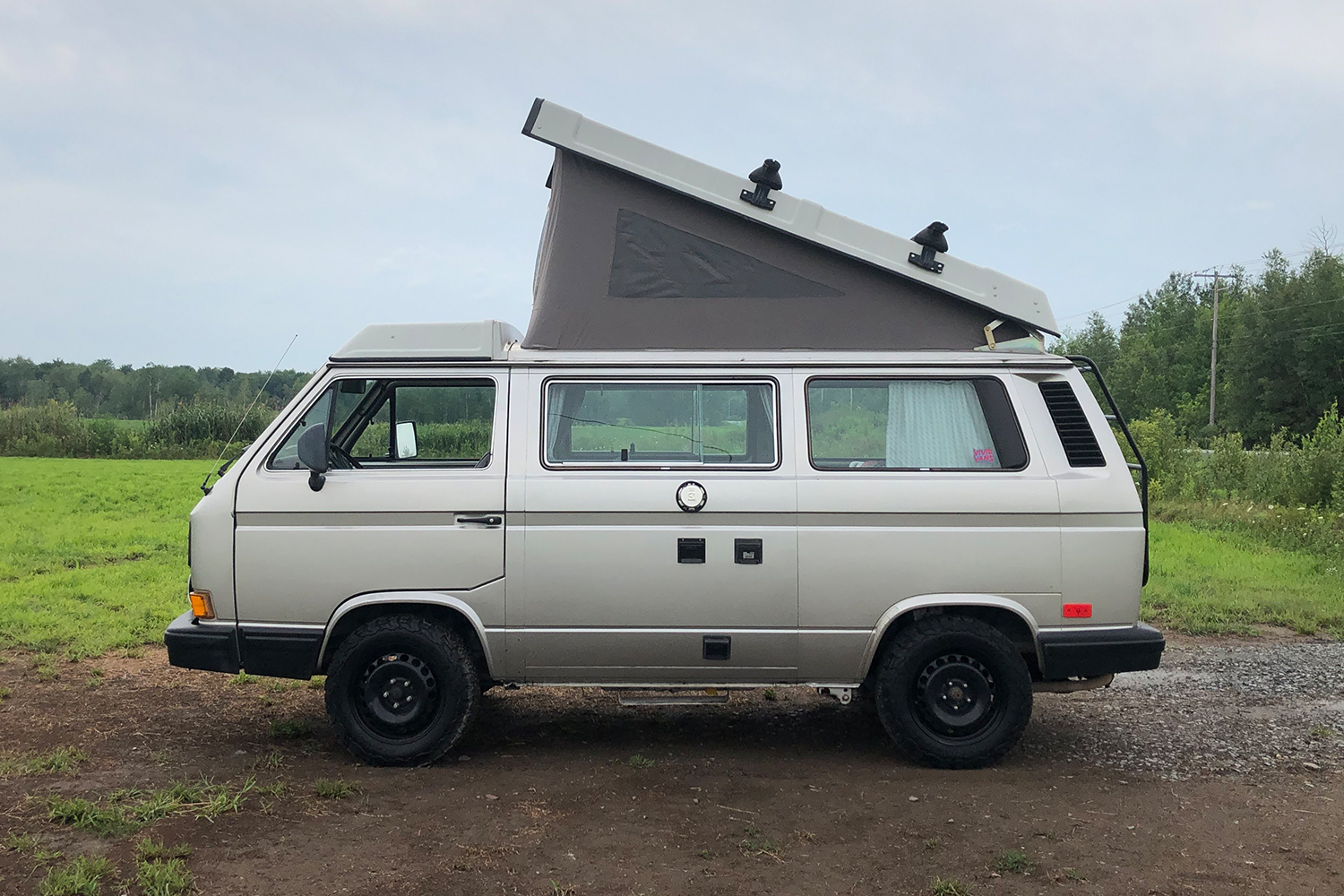Roughly 30 years ago, an icon of automotive design rolled off the assembly line for the last time when the Jeep Grand Wagoneer, the anachronistic wood-sided sport-utility vehicle penned by Brooks Stevens, left the market after 1991. It marked the end of almost three decades of plying the same sparingly updated platform, one that became a stealth symbol of wealth among the well-heeled owners who appreciated its smooth, go-anywhere ride (and could afford its horrendous thirst for fuel).
What was once an aberration — a luxury truck — has now become standard issue in the driveways and garages of aspirational lease holders across the country. SUVs have taken over the auto industry, and with nameplates like Cadillac, Mercedes-Benz and Land Rover soaking up all the cash that was once Jeep’s exclusive province, it’s no surprise that the automaker has been planning a return to the segment that started it all.
The 2022 Jeep Grand Wagoneer gives the off-road brand a player at a rarefied price point that should stem the bleed of loyalists forced into competitor showrooms for their full-size SUV fix. As the capstone of Jeep’s line-up, this three-row sport-utility borrows almost nothing from its namesake’s past and instead carves out a steady course toward a future that will be familiar to anyone who’s spent time in a modern land-locked luxury liner.
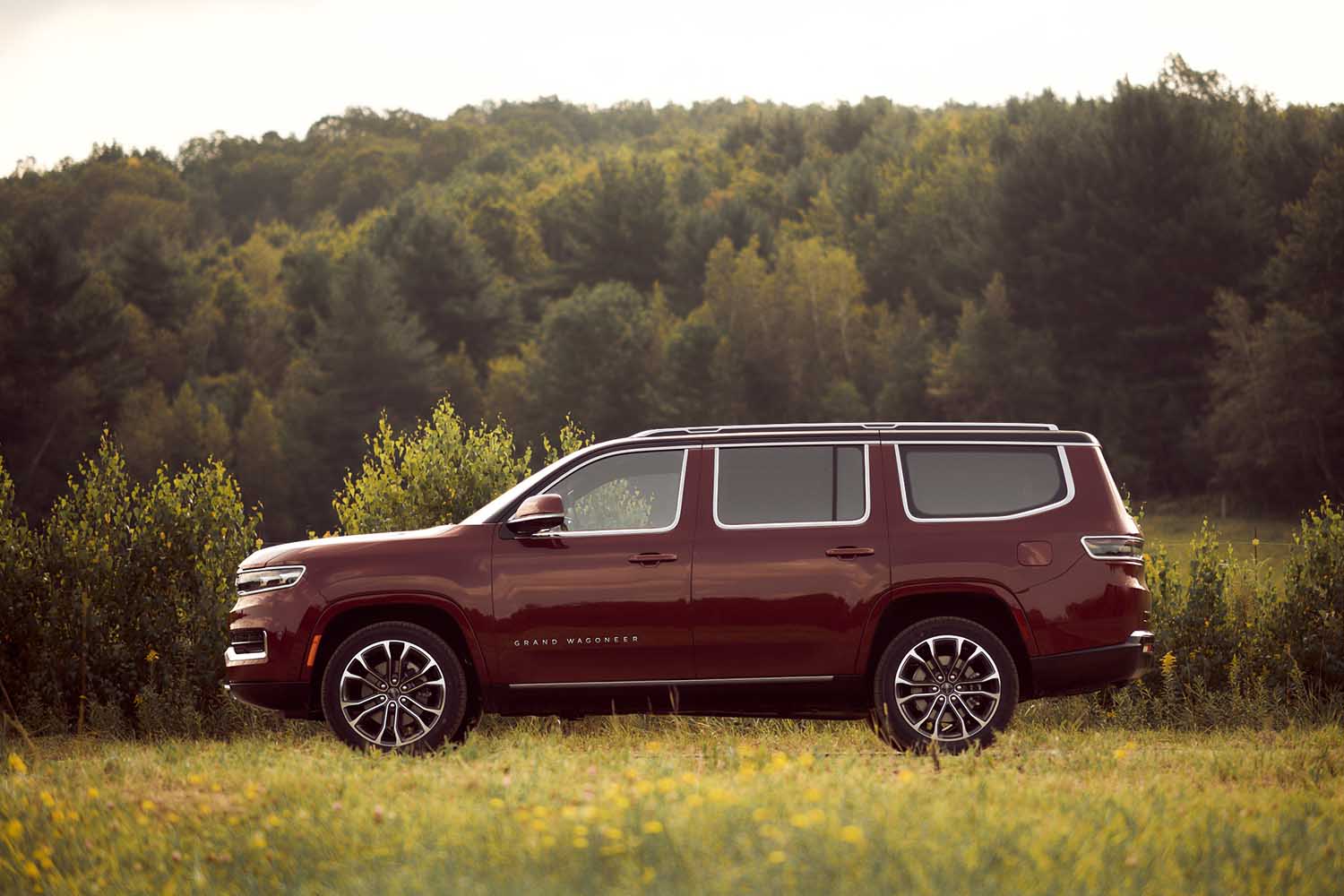
What’s in a Name?
Underscoring the new Grand Wagoneer’s break with tradition is sheet metal that bears no real resemblance to the model whose name it resurrects. From the front, the Grand Wagoneer’s visage is a clear nod to the also-updated but somewhat smaller Grand Cherokee sport-utility, with its seven-slot grille and its arched slit headlights. Along the sides things are a little more awkward: current crash test regulations make the large greenhouse of the original Wagoneer an impossibility, and the forearms and flank of the Jeep are a little too anonymous to stand out from the rest of the people-mover pack. At the rear, one finds the only true hint of the vehicle’s heritage in the shape of the hatch glass, which comes close to matching the geometry of Brooks’s original.
That being said, the Grand Wagoneer cuts an imposing figure based on mass alone, and in traffic I had several drivers roll down their windows and brave the blistering summer heat to ask me questions about the truck and offer their own positive appraisal of its appearance. It may not be as brutalist as the current Cadillac Escalade, nor as bejeweled as Lincoln’s Navigator, but the Jeep occupies a middle ground that makes the best of its unavoidably behemoth-like stature.
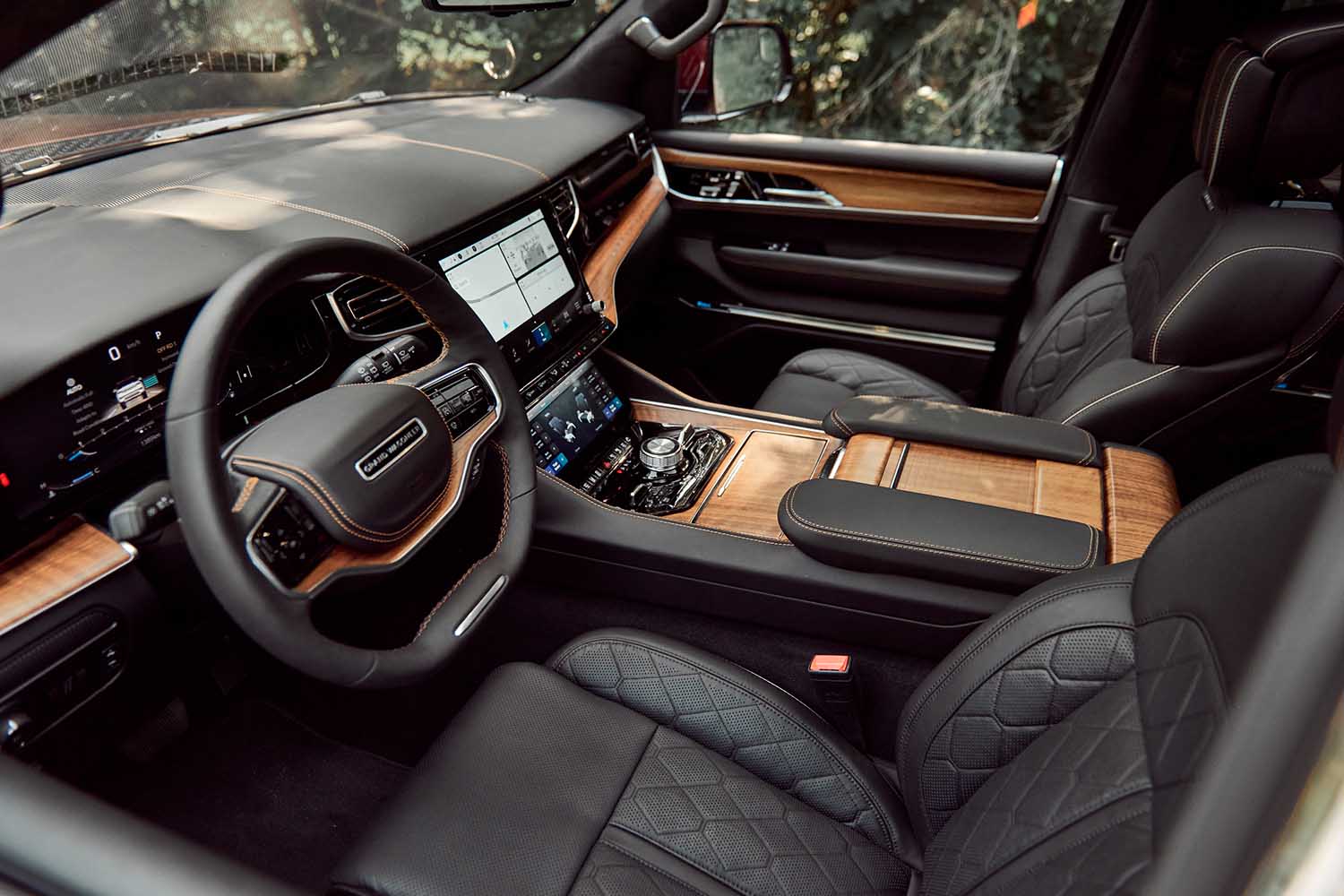
It’s What’s Inside That Counts
Where the Jeep Grand Wagoneer truly impresses is its cabin. With a price tag that starts at just over $86,000 (and which can creep past $110,000 depending on trim level and options), Jeep’s designers had no choice but to stretch its interior quality and layout well beyond the status quo in courting this new jet-set of potential buyers.
The end result is an overwhelming success. The Grand Wagoneer’s insides speak of opulence in a hoarse whisper that can just barely be heard over the ripple of its diamond-quilted leather seats and the convincingly arboreal wood grain laid into its dash, door panels and center console. It’s an effective mix of old-school luxe and present-day panache, and the treatment extends all the way to the often-overlooked third row of accommodations, where the same coddling spirit does its best to alleviate the contortions required when occupying the very rear of the vehicle.
Jeep has also seen fit to equip its latest SUV with more screens than any other automobile I’ve ever driven. In addition to the standard set on the center stack and the (somewhat plain but quite functional) gauge cluster, there’s also a secondary fold-down unit on the console, a pair hanging off the headrests for second row riders, a wave-curled unit resting in between those same captain’s chairs, and amazingly, a hidden audio/video display for the front passenger that fades in and out of dashboard opacity. Even with a full complement of passengers, the Grand Wagoneer verges on providing more screens than there are eyeballs to view them.
Whether you’ve got every LCD blazing or you’re contemplating the road ahead undistracted by multimedia spectacle, the Grand Wagoneer maintains a calm and quiet demeanor even at highway speeds. Exterior noise is kept to a minimum, and there’s much to commend the Jeep’s acoustic ambiance and ability to tread softly as compared to its similarly-sized rivals.
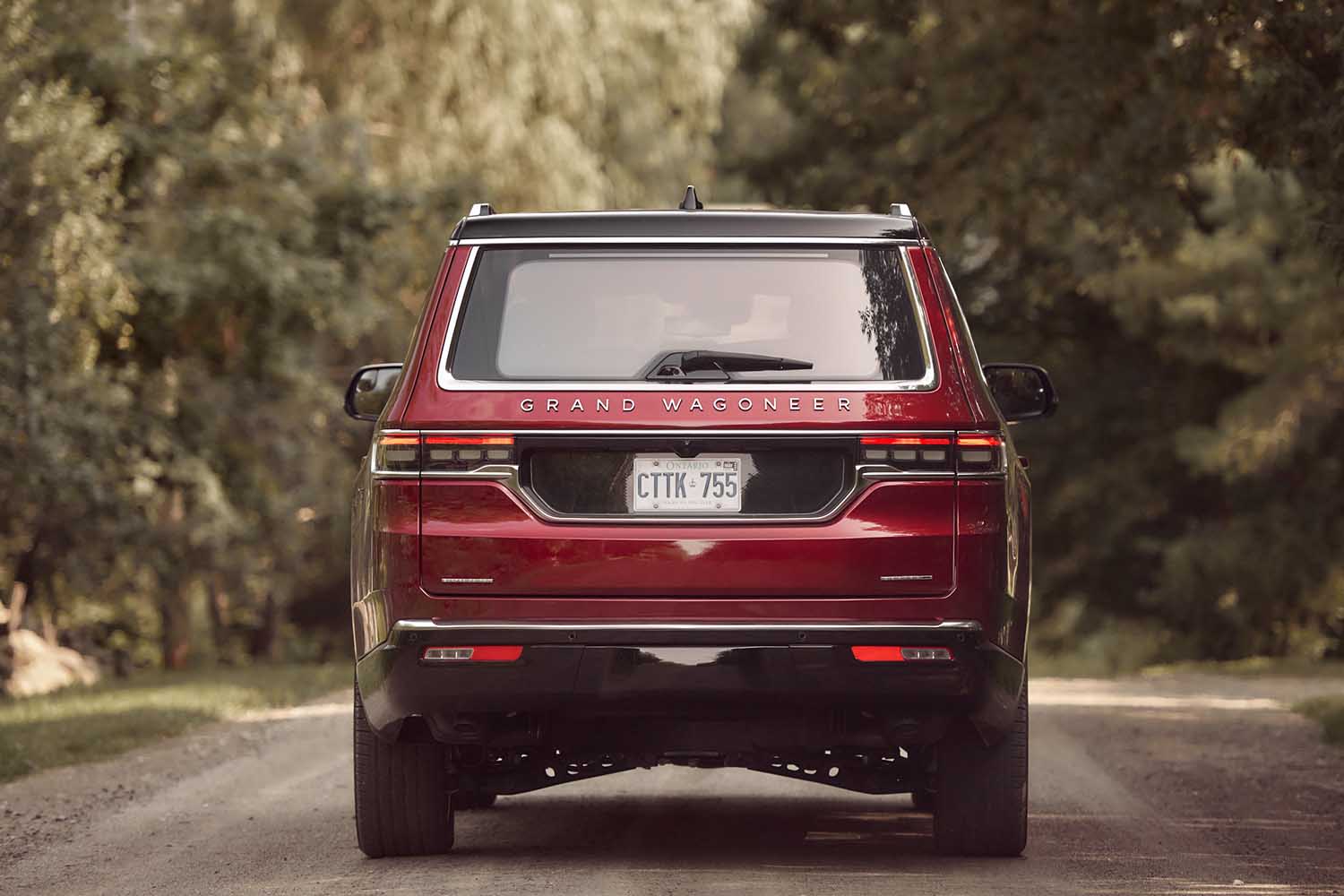
Power: Sufficient
That relaxed dynamic continues behind the wheel of the enormous Jeep. With a curb weight in the neighborhood of 6,000 lbs., the Grand Wagoneer’s air suspension has been wisely tuned for comfort and control over any hint of athleticism, and while I never quite forgot the truck’s gargantuan proportions, it remained manageable even on the undulating secondary roads that cross through Quebec’s wooded Eastern Townships region.
The extra pounds make the vehicle’s acceleration that much more impressive, as the Jeep packs a 471-horsepower punch (backed by 455 lb-ft of torque) delivered by a 6.4-liter V8 engine (matched with a 48-volt mild hybrid system). Swift enough to pass but not fast enough to get you into real trouble, it’s a well-paired drivetrain that is effectively managed by a standard eight-speed automatic transmission. For those who care about fuel economy in this class of SUV, the promised plug-in hybrid model can’t come soon enough; the eight-cylinder Grand Wagoneer checks in at a dismal 15 mpg in combined city and highway driving.
Jeep has of course included its most sophisticated four-wheel drive system with the Grand Wagoneer (Quadra-Drive II), but despite the presence of multiple off-road modes and height adjustments for its air suspension, it’s unlikely that this beast will see anything more challenging than a snowy driveway or rain-slicked highway on-ramp. More useful is the vehicle’s nearly 10,000 lbs of towing capacity, which places it near the front of the pack for opulent boat-tuggers (and is a credit to its body-on-frame platform’s progenitor, the Ram 1500 full-size pickup).
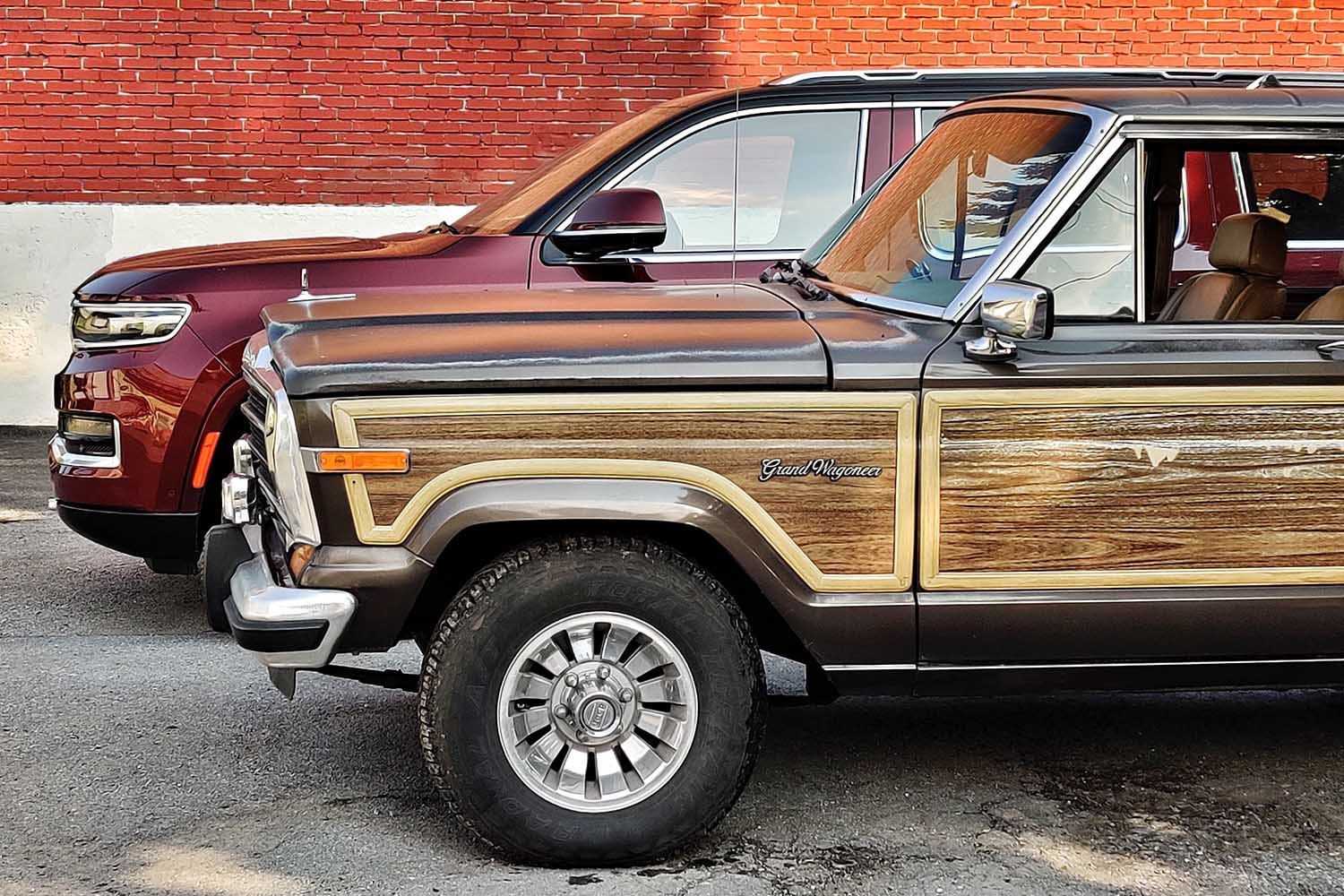
Reverse-Woody
The Grand Wagoneer will be joined by a lesser, more affordable model (the Wagoneer) later in the year, one that will seemingly compete against Jeep’s own Grand Cherokee L in the $50k showroom slot.
Grand is the way to go, however, if you’re hoping to catch the same big-boned, plush persona offered by Escalade & co. Keen eyes will also notice the distinct lack of Jeep badges on the Grand Wagoneer, as the SUV builder has chosen to minimize mothership branding as it builds out what it hopes can be a long-term luxury profit center. The end goal? Spawning a host of Wagoneer-family spinoffs that skew softer than the “trail-rated” demographic that it currently counts as repeat customers.
As a great big American cruiser, the Grand Wagoneer succeeds, particularly for those enamored of cabin trappings that spoil with their splendor (and screen-space). Rather than make it a callback to past glory, this time Jeep has elected to invert nostalgic expectations by ignoring the original truck’s design DNA and putting all the wood paneling on the inside instead.
This article was featured in the InsideHook newsletter. Sign up now.
